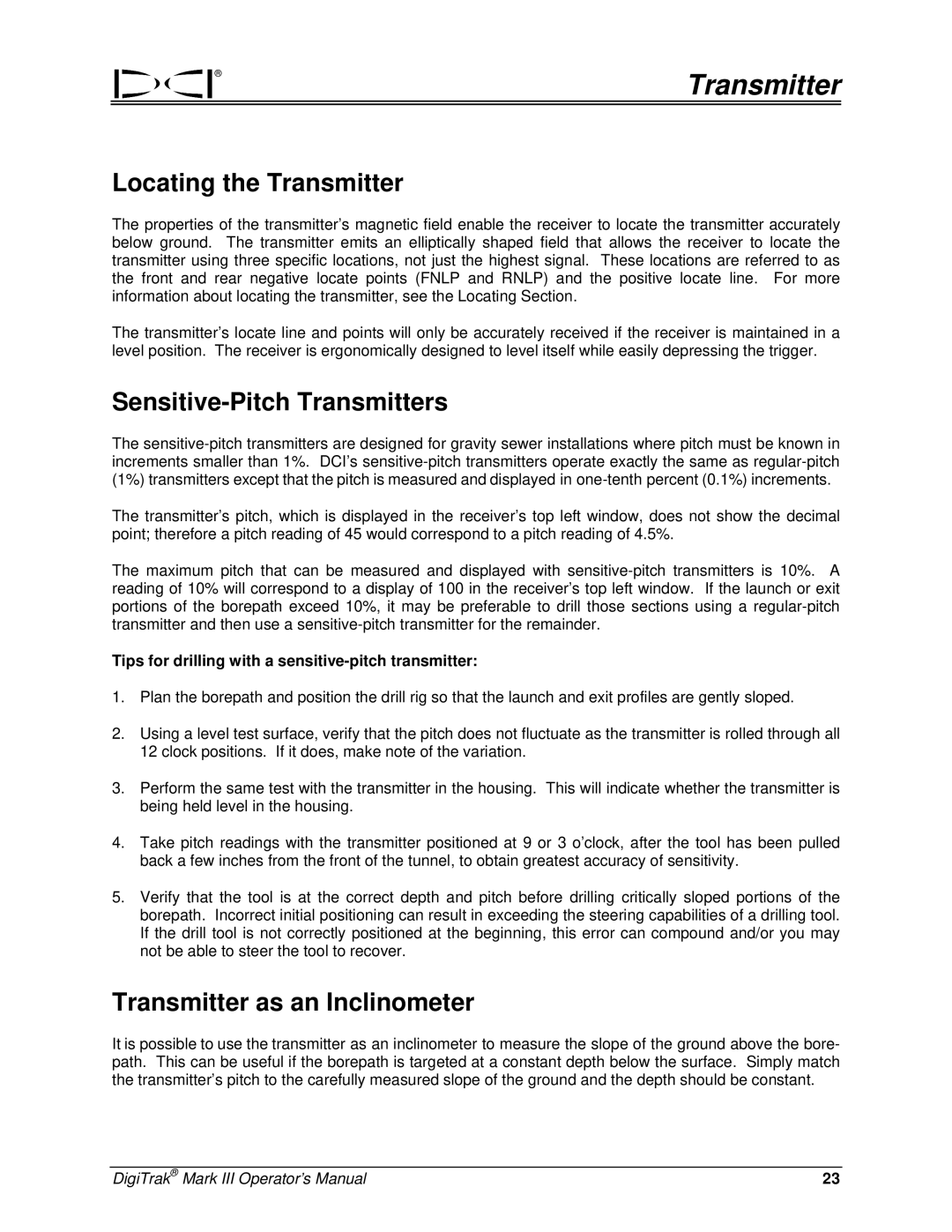® | Transmitter |
|
Locating the Transmitter
The properties of the transmitter’s magnetic field enable the receiver to locate the transmitter accurately below ground. The transmitter emits an elliptically shaped field that allows the receiver to locate the transmitter using three specific locations, not just the highest signal. These locations are referred to as the front and rear negative locate points (FNLP and RNLP) and the positive locate line. For more information about locating the transmitter, see the Locating Section.
The transmitter’s locate line and points will only be accurately received if the receiver is maintained in a level position. The receiver is ergonomically designed to level itself while easily depressing the trigger.
Sensitive-Pitch Transmitters
The
The transmitter’s pitch, which is displayed in the receiver’s top left window, does not show the decimal point; therefore a pitch reading of 45 would correspond to a pitch reading of 4.5%.
The maximum pitch that can be measured and displayed with
Tips for drilling with a sensitive-pitch transmitter:
1.Plan the borepath and position the drill rig so that the launch and exit profiles are gently sloped.
2.Using a level test surface, verify that the pitch does not fluctuate as the transmitter is rolled through all 12 clock positions. If it does, make note of the variation.
3.Perform the same test with the transmitter in the housing. This will indicate whether the transmitter is being held level in the housing.
4.Take pitch readings with the transmitter positioned at 9 or 3 o’clock, after the tool has been pulled back a few inches from the front of the tunnel, to obtain greatest accuracy of sensitivity.
5.Verify that the tool is at the correct depth and pitch before drilling critically sloped portions of the borepath. Incorrect initial positioning can result in exceeding the steering capabilities of a drilling tool. If the drill tool is not correctly positioned at the beginning, this error can compound and/or you may not be able to steer the tool to recover.
Transmitter as an Inclinometer
It is possible to use the transmitter as an inclinometer to measure the slope of the ground above the bore- path. This can be useful if the borepath is targeted at a constant depth below the surface. Simply match the transmitter’s pitch to the carefully measured slope of the ground and the depth should be constant.
DigiTrak® Mark III Operator’s Manual | 23 |
